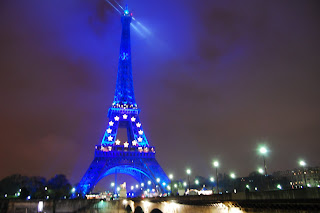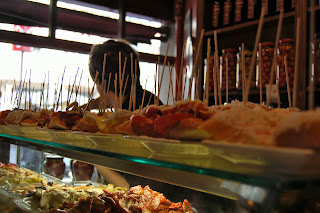






Editor’s note: Written on the Ryanair return flight from
It was my goal to write the remainder of my
We took an excursion to the
Our last night here proved to be amazing. We did the traditional Arab bath, right alongside naked, bathing Moroccan women. Yes, it gave the term “community bath” and entirely new meaning.
So there were naked down to our underwear. We were assigned an old stout Moroccan woman with skin as dark as leather and a fine veil of dark hairs above her upper lip. She led us into an open tiled room that echoed with the splash of steaming water and French and Arabic conversations. To the right were a couple of Moroccan women sitting on mats and scooping from buckets of water to rinse their hair. We were lucky enough to have small stools to sit on as our naked Moroccan filled and refilled our personal buckets from spigots that protruded out of the cracked plaster walls. In a garbled mix of French and English she handed us globs of a Moroccan soap that smelled like cheap shoes and looked like silly puddy made from snot. After we’d finished the stuff we were rewarded with buckets of hot water tossed onto our soapy bodies completely without warning. But the next part was definitely the best – the exfoliation. I basically felt like a horse getting bathed for the first time. The Moroccan attacked my arms with a glove slightly less gritty that a nail file and scrubbed until the first couple layers of my dead skin rolled into brown clumps which were later washed away by bowlfuls of water. None of us could believe how incredibly dirty were, but considering we’d climbed up and down a part of the Atlas Mountains things weren’t too bad. Afterwards, we each got a handful of some kind of Moroccan mud slopped on our heads, which we were then motioned to rub in. The Moroccan then attacked us with something that looked like a cat brush, raking if through our cakey, tangled hair. Afterwards, was more bucketfuls of water poured over our heads, which resulted in the mud trickling into places where mud does not belong. As I’m sitting here on this flight, I’m still picking it out of my ears!
The whole thing was something I wouldn’t trade for the world. I only wish I had more time to explore the land of the glorious culture. Oh yes, and did I mention this is the only kind of bath they ever get?


































